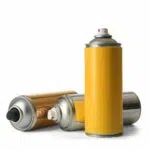National Inhalant and Poisons Awareness Week takes place in the third week of March each year. This year, it takes place from March 15 to 21. There’s nothing we wouldn’t do to keep our families healthy and safe. We go to doctors, eat healthily, and exercise often. But did you know that innocuous objects around the house can severely impair health? Harmful inhalants lie in most household products such as sprays, polishes, and glue. Repeated exposure to these chemicals can affect our heart, lung, and brain health in the long term. National Inhalant and Poisons Awareness Week creates awareness and shares preventive measures that we can all take.
History of National Inhalants and Poisons Awareness Week
The National Inhalant Prevention Coalition was created this week to raise public awareness of dangerous inhalants — several that lie inconspicuously around the average American home. Since these substances produce vapors, people may unwittingly be breathing toxic chemicals into their bodies.
Inhalants contain psychoactive properties similar to other mood-altering substances such as alcohol, drugs, or benzos. They take effect almost instantly – within seconds, once inhaled through either the nose or mouth. The lungs quickly absorb the chemicals, which travel into the bloodstream and brain. Once embedded in our bodies, the chemicals can impair our breathing, nervous system, and cardiovascular functions. Most inhalants are incredibly toxic, causing irreparable damage to health.
Adolescents are at the highest risk from these chemicals. Studies show that inhalant abuse is rampant among teens who sniff glue and other substances for a high. The effects are short-lived, but therein lies the danger. Inhalant abusers tend to get their fix for hours through repeated sniffing. Rampant inhalant abuse may lead to withdrawal, addiction, and sometimes even an overdose.
There are hundreds of inhalant drugs. They vary in their toxicity, chemical composition, or form. What’s scary is many of them are products that we use every day, readily available at any store. Think products such as glue, nail polish removers, or felt-tip markers. Toxic inhalants also come in the form of hairspray, fabric protectors, or aerosol deodorants. Other sources include helium balloons, paint thinners, and propane tanks. National Inhalants and Poisons Awareness Week aim to create more awareness of the dangers of inhalants through public campaigns and resource dissemination.
National Inhalants and Poisons Awareness Week timeline
At the Oracle of Delphi, priestesses inhale vapors to change states of consciousness.
People use ether and chloroform as intoxicants since they are cheaper than alcohol.
Research indicates that chemicals in aerosol sprays can cause irregular heart rhythms and cardiac failure within minutes of sniffing.
Studies reveal that about 1.8 million people above 12 years use inhalants to get high.
National Inhalants and Poisons Awareness Week FAQs
What are inhalants used for medically?
The medical industry uses several inhalants. Agents such as nitrous oxide, isoflurane, sevoflurane, halothane, and desflurane enable and maintain general anesthesia.
What happens if you inhale too much aerosol?
Exposure to high amounts of chemicals in aerosol sprays prevents the lungs from breathing in oxygen. The results can include heart irregularities or death from suffocation.
How are inhalants misused?
Inhalant abusers breathe vapors into their bodies in various ways. They usually snort or sniff fumes from aerosol sprays, dispensers, or containers. Some may even soak a cloth in chemicals and place it over their nose or mouth.
How to Observe National Inhalants and Poisons Awareness Week
Stay aware of your surroundings
Conduct an audit of substances around the house. Keep potentially hazardous products locked away. Also, ensure you keep an eye on who has access to which products.
Make safety a priority
When using chemical products, point them away from your face. Wear a mask or gloves if needed.
Educate yourself
Research online or ask the nearest poison control center for resources. Find out what you can do around the house to keep you and your loved ones safe.
5 Facts About Aerosol Sprays That Will Blow Your Mind
Most sprays don’t harm the planet anymore
Since the ban on using harmful chlorofluorocarbons (C.F.C.s), modern-day aerosol sprays only contain nitrogen or oxygen.
The cans are recyclable
At least 70% of recycling programs in the U.S. can and will recycle empty aerosol cans.
Aerosols in cosmetics
Many lotions, deodorants, and self-tanning sprays on the market contain aerosol.
Aerosols in medical products
Aerosol technology is prevalent in products such as nasal sprays, eye-wash sprays, and burn gels.
They reduce waste
Aerosol has an incredibly long shelf life, which means less waste dumped in landfills.
Why National Inhalants and Poisons Awareness Week is Important
It keeps us informed and alert
We must know more about the products we buy, often bought without a thought. Let’s read those labels carefully each time we shop.
We make better choices
It’s a great week to switch to healthier, sustainable products. Bonus points if the products are homegrown or locally made.
Healthier, safer homes
Ultimately, all of us want to lead happy, healthier lives. If one way to do that is a simple check of household products, everyone must get on board.
National Inhalants and Poisons Awareness Week dates
| Year | Date | Day |
|---|---|---|
| 2024 | March 17–23 | Sunday–Saturday |
| 2025 | March 16–22 | Sunday–Saturday |
| 2026 | March 15–21 | Sunday–Saturday |





































